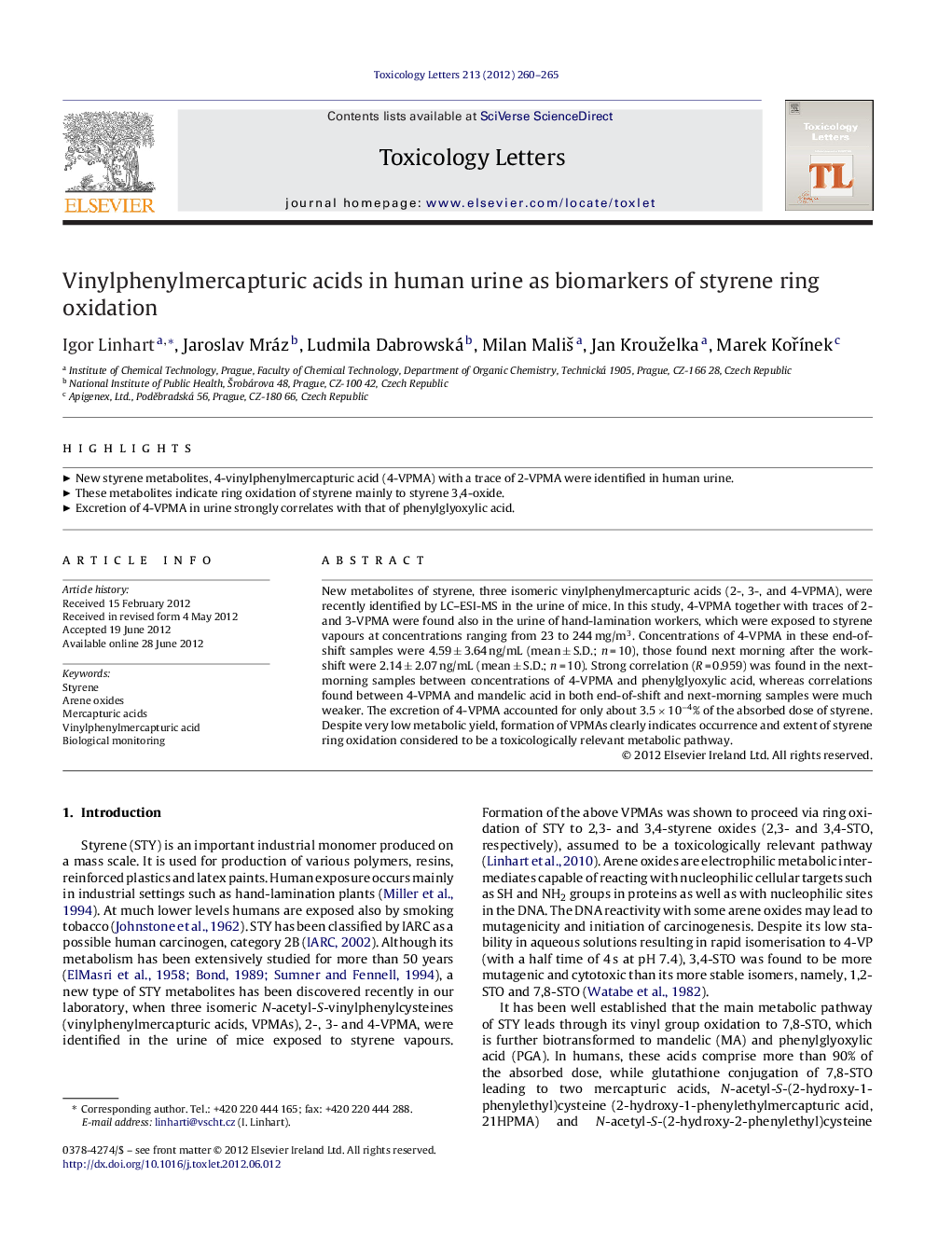| Article ID | Journal | Published Year | Pages | File Type |
|---|---|---|---|---|
| 2599415 | Toxicology Letters | 2012 | 6 Pages |
New metabolites of styrene, three isomeric vinylphenylmercapturic acids (2-, 3-, and 4-VPMA), were recently identified by LC–ESI-MS in the urine of mice. In this study, 4-VPMA together with traces of 2- and 3-VPMA were found also in the urine of hand-lamination workers, which were exposed to styrene vapours at concentrations ranging from 23 to 244 mg/m3. Concentrations of 4-VPMA in these end-of-shift samples were 4.59 ± 3.64 ng/mL (mean ± S.D.; n = 10), those found next morning after the work-shift were 2.14 ± 2.07 ng/mL (mean ± S.D.; n = 10). Strong correlation (R = 0.959) was found in the next-morning samples between concentrations of 4-VPMA and phenylglyoxylic acid, whereas correlations found between 4-VPMA and mandelic acid in both end-of-shift and next-morning samples were much weaker. The excretion of 4-VPMA accounted for only about 3.5 × 10−4% of the absorbed dose of styrene. Despite very low metabolic yield, formation of VPMAs clearly indicates occurrence and extent of styrene ring oxidation considered to be a toxicologically relevant metabolic pathway.
► New styrene metabolites, 4-vinylphenylmercapturic acid (4-VPMA) with a trace of 2-VPMA were identified in human urine. ► These metabolites indicate ring oxidation of styrene mainly to styrene 3,4-oxide. ► Excretion of 4-VPMA in urine strongly correlates with that of phenylglyoxylic acid.
